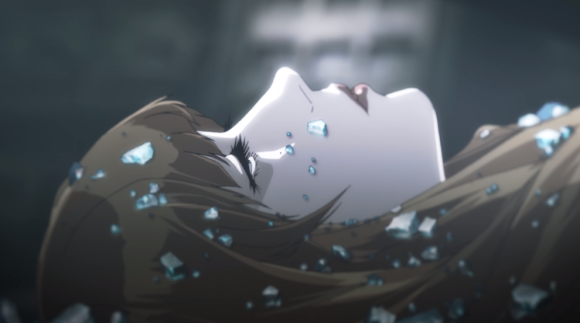
Shinichiro Watanabe’s signature anime style is on display in Blade Runner Blackout 2022.
Well that was quick.
Earlier this month we found out that Shinichiro Watanabe, the anime director behind Cowboy Bebop, Samurai Champloo, and Space Dandy, was working on an anime that would help bridge the narrative gap between the original Blade Runner and its upcoming sequel, Blade Runner 2049. Now, not quite two weeks later, the short, titled Blade Runner Black Out 2022, is finished and free-to-watch in YouTube.
As indicated by its title, the anime takes place in 2022, three years after the events of the first Blade Runner. It opens with on-screen text explaining that a new type of Replicant (the Blade Runner franchise’s human-like sentient machines) has been introduced, but that that there’s also been a growing backlash against them, with human supremacists using the Replicant Registration database to track down and exterminate Replicants.
This brings us to Trixie, a sex worker Replicant who’s being confronted by three armed men in a dark, rainy alleyway. Before she becomes the victim of their violent and carnal urges, however, she’s rescued by Iggy, an escaped military-use Replicant, who dispatches her antagonists in a very messy way.
Following this chance encounter, Trixie decides to throw her lot in with a plot by Iggy and his comrades to destroy the Replicant Registration data centers and launch an EMP attack against humanity, as part of a ploy to allow Replicants to fully blend in with the human population. The opportunity gels neatly with Trixie’s recent remunerations on the nature of her existence, as she’s come to question whether she’s anything more to her than just a doll with consciousness, if it’s possible for her to become human, and what happens to Replicants when they “die.”
When the time comes for the attack, Trixie shows off some impressive combat skills, considering that up until the events of the video she’s been essentially just a robot prostitute. But Watanabe only has so much time to work with, and wisely decided that rather than spend precious minutes showing how Trixie became such a capable combatant, audiences would be more satisfied if that time was used to show her turning a truck’s side-view mirror into a deadly weapon and using martial arts to defeat gun-wielding opponents in close quarters.
The fight choreography is heavily reminiscent of Watanabe’s work in Cowboy Bebop, with a rhythm to the strikes and a palpable weight as they hit the target. Speaking of rhythm, while there’s none of the full-blown jazz of Bebop or Watanabe’s 2012 TV series Kids on the Slope, there is a jazzy beat to much of the music’s percussion arrangement.
At times, though, Blade Runner Black Out 2022 also seems to take influences from other anime creators. A scene of Iggy and Trixie driving down a highway at night, with their faces intermittently illuminate by the streetlight, feels a bit like a similar sequence in director Mamoru Oshii’s Patlabor 2, and some of the abstract art in flashbacks brings to mind Final Fantasy character designer Yoshitaka Amano’s intricate line work.
At roughly 15 minutes in length, Blade Runner Black Out 2022 is generously long for a free-to-watch anime from one of the industry’s most respected creators. The Japanese-dialogue version above, released through Sony Pictures Japan’s official YouTube channel, sadly lacks subtitles. However, an English-dialogue version is not only mentioned in the credits, but is already complete, with a leaked version briefly uploaded to YouTube before being taken down following a complaint from U.S.-based anime streaming service Crunchyroll. That would suggest that Blade Runner Black Out 2022 will be available for viewing on Crunchyroll in the near future, likely before Blade Runner 2049’s October 3 world premiere in Los Angeles.
Source: YouTube/SonyPicturesJapan via IT Media
Images: YouTube/SonyPicturesJapan
Follow Casey on Twitter, where he wonders if the members of Bubblegum Crisis’ Priss and the Replicants rock band are listed in the Replicant Registration.

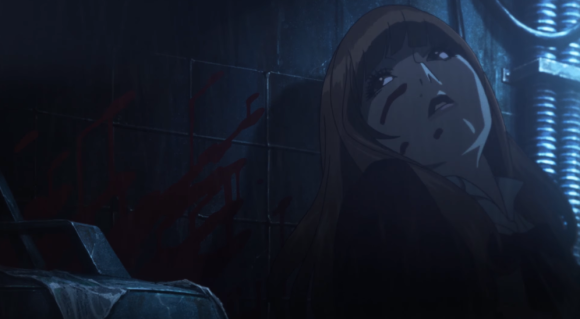
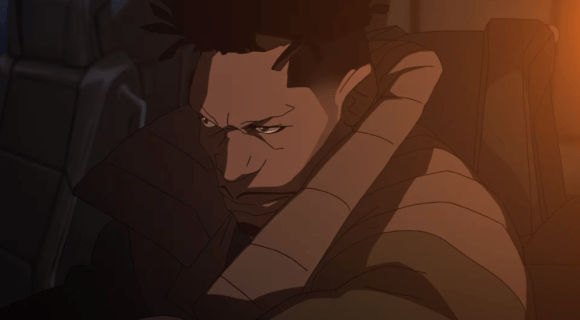
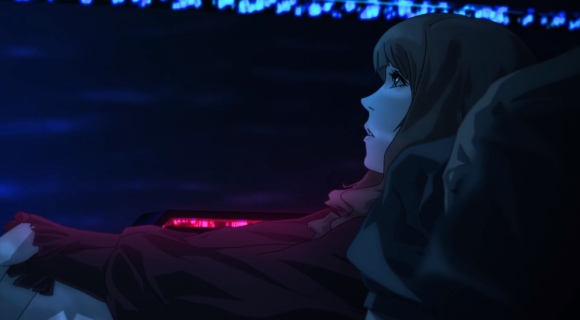
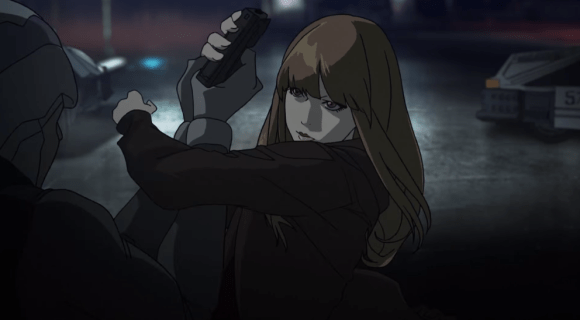
 Cowboy Bebop anime themed cafe coming to Tokyo and Osaka next month
Cowboy Bebop anime themed cafe coming to Tokyo and Osaka next month Heads up, Aussie anime fans: Terror in Resonance to premiere at Oz Comic-Con
Heads up, Aussie anime fans: Terror in Resonance to premiere at Oz Comic-Con Live-action Cowboy Bebop cast revealed by Netflix, but there’s someone missing from the crew
Live-action Cowboy Bebop cast revealed by Netflix, but there’s someone missing from the crew Professional basketball meets Cowboy Bebop in awesome NBA playoffs/anime video【Video】
Professional basketball meets Cowboy Bebop in awesome NBA playoffs/anime video【Video】 Cowboy Bebop fragrance line created to celebrate anime’s 25th anniversary
Cowboy Bebop fragrance line created to celebrate anime’s 25th anniversary All-you-can-drink Starbucks and amazing views part of Tokyo’s new 170 meter-high sky lounge
All-you-can-drink Starbucks and amazing views part of Tokyo’s new 170 meter-high sky lounge McDonald’s new Happy Meals offer up cute and practical Sanrio lifestyle goods
McDonald’s new Happy Meals offer up cute and practical Sanrio lifestyle goods More foreign tourists than ever before in history visited Japan last month
More foreign tourists than ever before in history visited Japan last month Beautiful Sailor Moon manhole cover coasters being given out for free by Tokyo tourist center
Beautiful Sailor Moon manhole cover coasters being given out for free by Tokyo tourist center Starbucks reopens at Shibuya Scramble Crossing with new look and design concept
Starbucks reopens at Shibuya Scramble Crossing with new look and design concept Deer in Nara Park mysteriously disappear during this year’s shikadamari season
Deer in Nara Park mysteriously disappear during this year’s shikadamari season Is the new Shinkansen Train Desk ticket worth it?
Is the new Shinkansen Train Desk ticket worth it? Uniqlo opens its first Furugi Project secondhand clothing pop-up shop in Tokyo
Uniqlo opens its first Furugi Project secondhand clothing pop-up shop in Tokyo Enjoy viewing Kyoto’s cherry blossoms from above on a guided zipline tour
Enjoy viewing Kyoto’s cherry blossoms from above on a guided zipline tour The oldest tunnel in Japan is believed to be haunted, and strange things happen when we go there
The oldest tunnel in Japan is believed to be haunted, and strange things happen when we go there Disney princesses get official manga makeovers for Manga Princess Cafe opening in Tokyo
Disney princesses get official manga makeovers for Manga Princess Cafe opening in Tokyo Beautiful new Final Fantasy T-shirt collection on the way from Uniqlo【Photos】
Beautiful new Final Fantasy T-shirt collection on the way from Uniqlo【Photos】 Foreign English teachers in Japan pick their favorite Japanese-language phrases【Survey】
Foreign English teachers in Japan pick their favorite Japanese-language phrases【Survey】 Japanese convenience store packs a whole bento into an onigiri rice ball
Japanese convenience store packs a whole bento into an onigiri rice ball We try out “Chan Ramen”, an underground type of ramen popular in the ramen community
We try out “Chan Ramen”, an underground type of ramen popular in the ramen community Studio Ghibli releases Kiki’s Delivery Service chocolate cake pouches in Japan
Studio Ghibli releases Kiki’s Delivery Service chocolate cake pouches in Japan Japan’s bone-breaking and record-breaking roller coaster is permanently shutting down
Japan’s bone-breaking and record-breaking roller coaster is permanently shutting down New definition of “Japanese whiskey” goes into effect to prevent fakes from fooling overseas buyers
New definition of “Japanese whiskey” goes into effect to prevent fakes from fooling overseas buyers Our Japanese reporter visits Costco in the U.S., finds super American and very Japanese things
Our Japanese reporter visits Costco in the U.S., finds super American and very Japanese things Studio Ghibli unveils Mother’s Day gift set that captures the love in My Neighbour Totoro
Studio Ghibli unveils Mother’s Day gift set that captures the love in My Neighbour Totoro Foreign passenger shoves conductor on one of the last full runs for Japan’s Thunderbird train
Foreign passenger shoves conductor on one of the last full runs for Japan’s Thunderbird train Domino’s Japan now sells…pizza ears?
Domino’s Japan now sells…pizza ears? New Japanese KitKat flavour stars Sanrio characters, including Hello Kitty
New Japanese KitKat flavour stars Sanrio characters, including Hello Kitty Kyoto creates new for-tourist buses to address overtourism with higher prices, faster rides
Kyoto creates new for-tourist buses to address overtourism with higher prices, faster rides Sales of Japan’s most convenient train ticket/shopping payment cards suspended indefinitely
Sales of Japan’s most convenient train ticket/shopping payment cards suspended indefinitely Sold-out Studio Ghibli desktop humidifiers are back so Totoro can help you through the dry season
Sold-out Studio Ghibli desktop humidifiers are back so Totoro can help you through the dry season Japanese government to make first change to romanization spelling rules since the 1950s
Japanese government to make first change to romanization spelling rules since the 1950s Ghibli founders Toshio Suzuki and Hayao Miyazaki contribute to Japanese whisky Totoro label design
Ghibli founders Toshio Suzuki and Hayao Miyazaki contribute to Japanese whisky Totoro label design Doraemon found buried at sea as scene from 1993 anime becomes real life【Photos】
Doraemon found buried at sea as scene from 1993 anime becomes real life【Photos】 Tokyo’s most famous Starbucks is closed
Tokyo’s most famous Starbucks is closed One Piece characters’ nationalities revealed, but fans have mixed opinions
One Piece characters’ nationalities revealed, but fans have mixed opinions We asked a Uniqlo employee what four things we should buy and their suggestions didn’t disappoint
We asked a Uniqlo employee what four things we should buy and their suggestions didn’t disappoint Princesses, fruits, and blacksmiths: Study reveals the 30 most unusual family names in Japan
Princesses, fruits, and blacksmiths: Study reveals the 30 most unusual family names in Japan Japanese marathoners attacked by swarm of hornets, 115 stung
Japanese marathoners attacked by swarm of hornets, 115 stung Gun-dam, these are some crazy-looking anime robot-style cooking knives from Japan【Photos】
Gun-dam, these are some crazy-looking anime robot-style cooking knives from Japan【Photos】 This video of someone making ramen miniatures is the most relaxing thing on YouTube【Video】
This video of someone making ramen miniatures is the most relaxing thing on YouTube【Video】 Anime music legend Yoko Kanno to compose music for Japan’s Takarazuka all-female revue
Anime music legend Yoko Kanno to compose music for Japan’s Takarazuka all-female revue A funny thing happened on the way to Japan: Guess that anime song!
A funny thing happened on the way to Japan: Guess that anime song! Touken Rambu chocolates are a treat for anime fans and a test of how well you know the characters
Touken Rambu chocolates are a treat for anime fans and a test of how well you know the characters Final Fantasy artist Yoshitaka Amano anthropomorphizes katana made from a meteorite
Final Fantasy artist Yoshitaka Amano anthropomorphizes katana made from a meteorite Italian jazz pianist unleashes inner Ghibli fanboy, releases anime theme song album
Italian jazz pianist unleashes inner Ghibli fanboy, releases anime theme song album Does running like Naruto really make you faster? A YouTube science channel investigates【Video】
Does running like Naruto really make you faster? A YouTube science channel investigates【Video】 The most awesome anime fan art is fan art that’s also traditional Japanese sweets【Photos】
The most awesome anime fan art is fan art that’s also traditional Japanese sweets【Photos】 Athletic otaku runs marathon in impressive time while cosplaying as anime magical girl 【Photos】
Athletic otaku runs marathon in impressive time while cosplaying as anime magical girl 【Photos】 Panic & hope: Thoughts on live-action Akira
Panic & hope: Thoughts on live-action Akira Is this the set of the new Blade Runner film? No, it’s Uniqlo in New York
Is this the set of the new Blade Runner film? No, it’s Uniqlo in New York One Piece anime katanas recreated as exquisite letter openers by Japan’s swordsmith legacy heirs
One Piece anime katanas recreated as exquisite letter openers by Japan’s swordsmith legacy heirs Keyboard with light-up, “flying” letters looks like a reverse typing rhythm game【Video】
Keyboard with light-up, “flying” letters looks like a reverse typing rhythm game【Video】
Leave a Reply